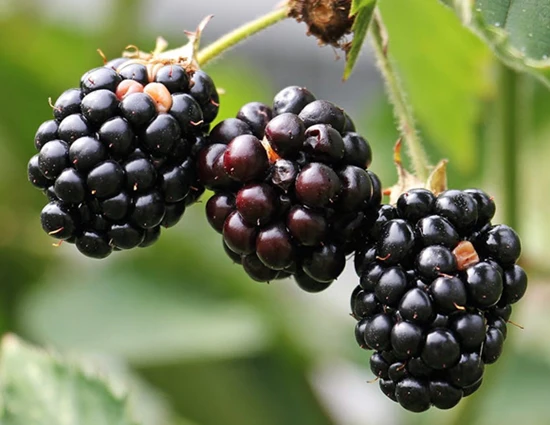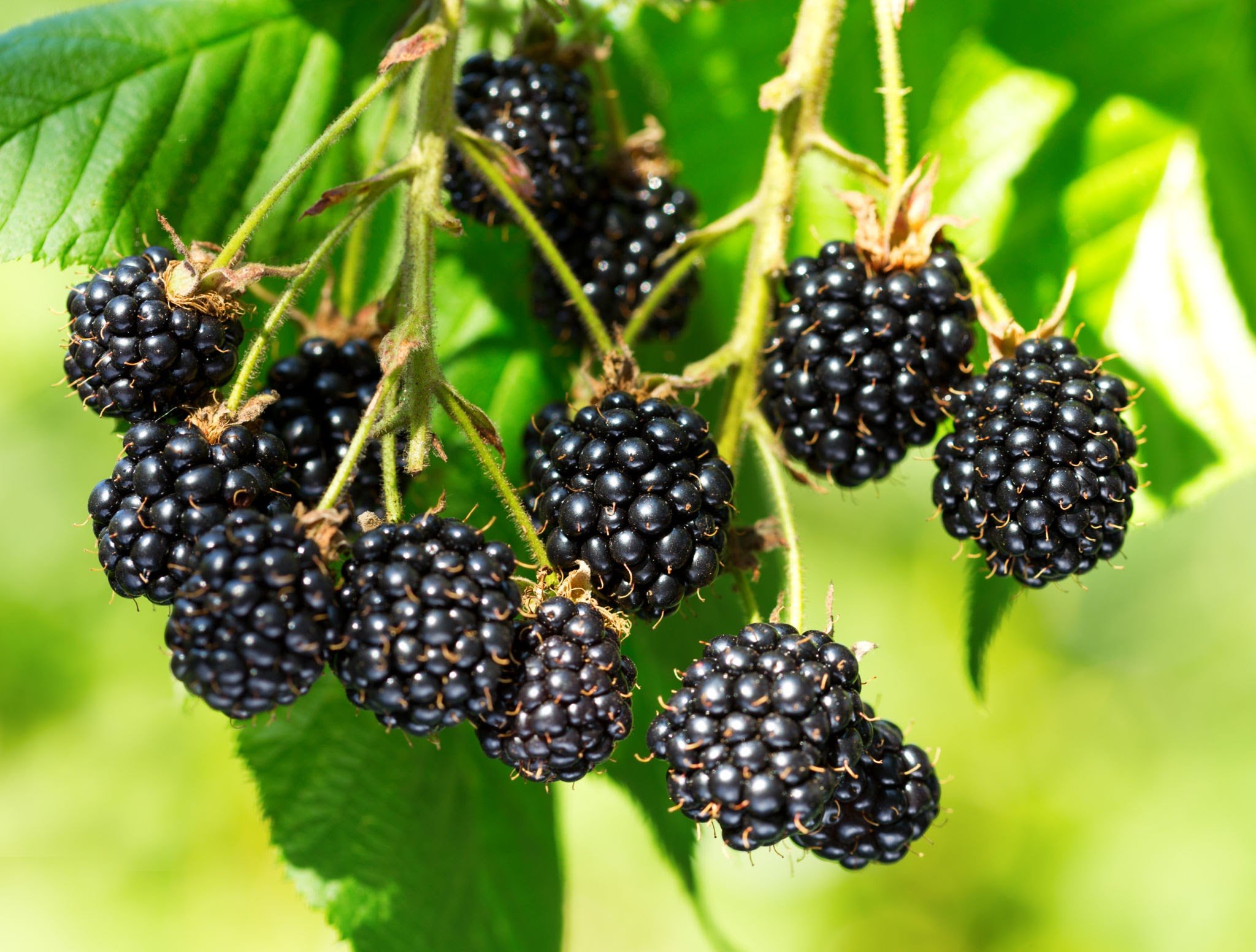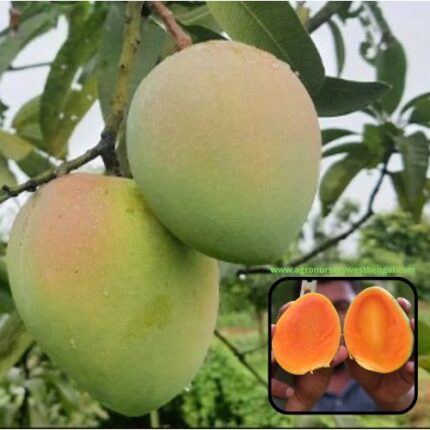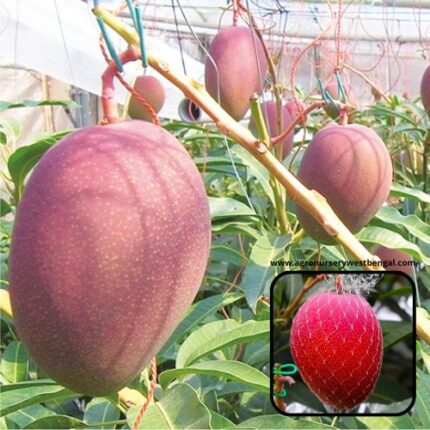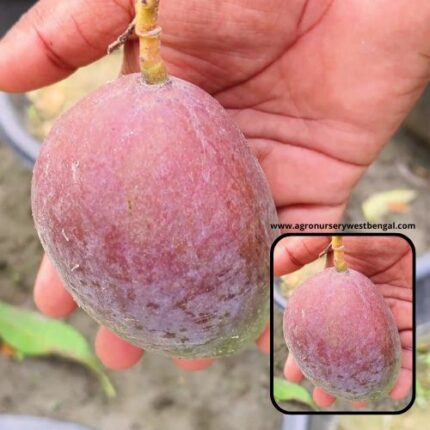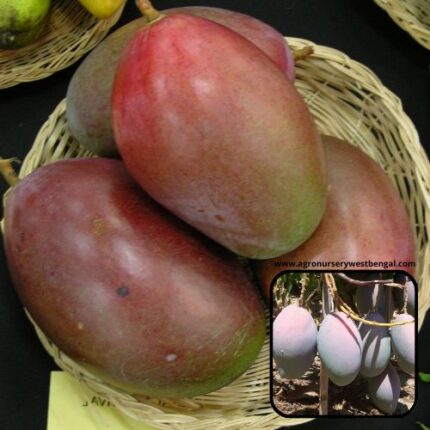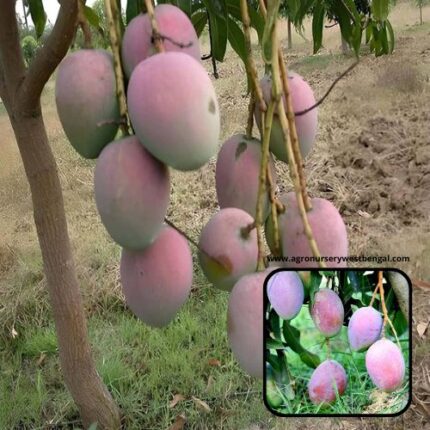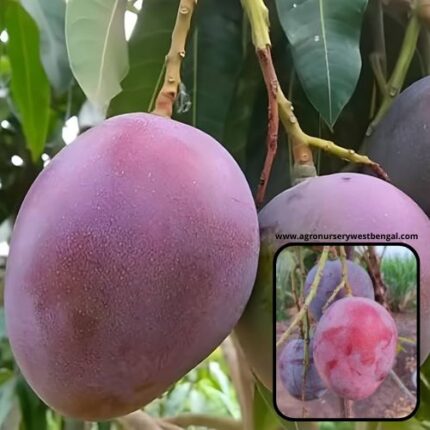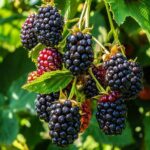
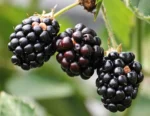
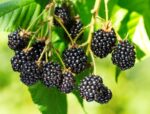
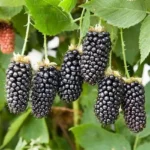
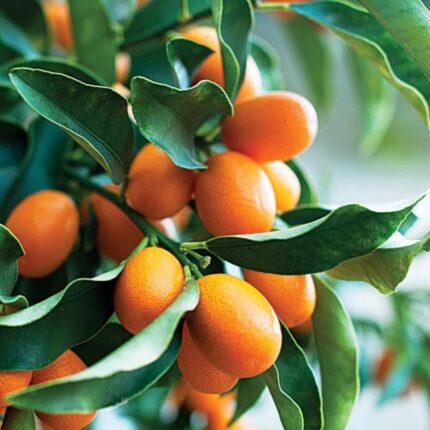

Blackberry fruit plants
₹819 Original price was: ₹819.₹569Current price is: ₹569.
The blackberry is a popular and nutritious fruit, though its specific characteristics can vary depending on the cultivar. Here’s a general description:
1. Botanical Classification:
- Genus: Rubus (which also includes raspberries, dewberries, and loganberries).
- Family: Rosaceae (Rose family).
- Botanical Structure: Blackberries are not true berries in the botanical sense. They are aggregate fruits, meaning they are made up of many tiny individual fruits called drupelets that are clustered together around a central core (receptacle). Unlike raspberries, where the receptacle remains on the plant when picked, the blackberry’s receptacle comes off with the fruit.
2. The Plant (Bramble):
- Growth Habit: Blackberries grow on thorny or thornless bushes known as brambles. These can have various growth habits:
- Erect: Self-supporting canes.
- Semi-erect: Canes that arch and may benefit from support.
- Trailing: Long, prostrate canes that require trellising.
- Canes: Blackberry plants produce canes that are typically biennial (live for two years). Primocanes (first-year canes) grow vegetatively, and floricanes (second-year canes) produce fruit and then die back. Some newer varieties are “primocane-fruiting,” meaning they can produce fruit on first-year canes, often yielding two crops in a season.
- Foliage: Leaves are usually compound, with three or five oval leaflets, typically dark green on top and lighter underneath.
3. The Fruit:
- Appearance:
- Shape: Conical or rounded, depending on the variety, made up of numerous small, plump, glossy drupelets.
- Color: The most characteristic feature is its color progression. Blackberries start green, turn red as they mature, and finally achieve their signature deep black or purplish-black color when fully ripe. A red or reddish tint indicates they are not yet fully ripe.
- Gloss: Ripe blackberries have a beautiful, shiny, almost patent-leather like sheen.
- Size: Varies greatly by cultivar, from small wild berries to large, plump cultivated varieties (e.g., ‘Natchez’, ‘Ouachita’, ‘Triple Crown’).
- Taste and Flavor Profile:
- Sweet-Tart Balance: The flavor is a delightful balance of sweetness and tanginess. The best varieties have a rich, complex flavor that is both juicy and slightly earthy.
- Astringency: Some varieties, especially when slightly under-ripe or wild, can have a hint of astringency, which contributes to their characteristic “bite.”
- Juiciness: Ripe blackberries are very juicy and succulent.
- Texture: Soft, tender, and juicy flesh with tiny, edible seeds within each drupelet. The seeds can be slightly noticeable but are generally not problematic for eating.
4. Ripeness:
- Blackberries are extremely delicate once ripe and do not continue to ripen after being picked.
- Key Indicator: The fruit must be fully black and should easily detach from the plant with a gentle tug. If it’s still reddish or requires force to pull, it’s not ripe and will be tart.
- Shelf Life: Ripe blackberries have a very short shelf life (2-3 days in the refrigerator) and are prone to bruising and mold.
5. Culinary Uses:
- Fresh Eating: Excellent for eating fresh, on their own, or in fruit salads, with yogurt, or in smoothies.
- Baking: Popular in pies, tarts, crumbles, muffins, and cobblers.
- Preserves: Widely used to make jams, jellies, and sauces due to their natural pectin content.
- Beverages: Juices, cordials, and even wines.
- Savory Applications: Can be used in chutneys or sauces for meats to provide a sweet and tangy contrast.
6. Nutritional Value: Blackberries are considered a superfood due to their impressive nutritional profile:
- High in Antioxidants: Especially rich in anthocyanins (which give them their dark color), ellagic acid, and other polyphenols, offering powerful antioxidant properties.
- Excellent Source of Vitamin C: Boosts the immune system.
- High in Dietary Fiber: Aids in digestion and promotes gut health.
- Good Source of Vitamin K: Important for blood clotting and bone health.
- Manganese: Crucial for bone development and metabolism.
- Low in Calories and Fat: A healthy and satisfying snack.
In West Bengal, India: While blackberries are native to temperate regions, some nurseries in West Bengal do sell blackberry plants, indicating that certain cultivars can be grown there. However, the climate of West Bengal, particularly the plains, is predominantly tropical to subtropical with hot, humid summers and mild winters. Blackberries generally prefer cooler climates. Success in West Bengal would likely depend on selecting heat-tolerant varieties and providing appropriate growing conditions (e.g., partial shade in intense summer heat, well-drained soil). The peak fruiting season would likely be during the cooler months or early summer if cultivation is successful. Wild blackberries as commonly found in Europe or North America are not indigenous to West Bengal.


